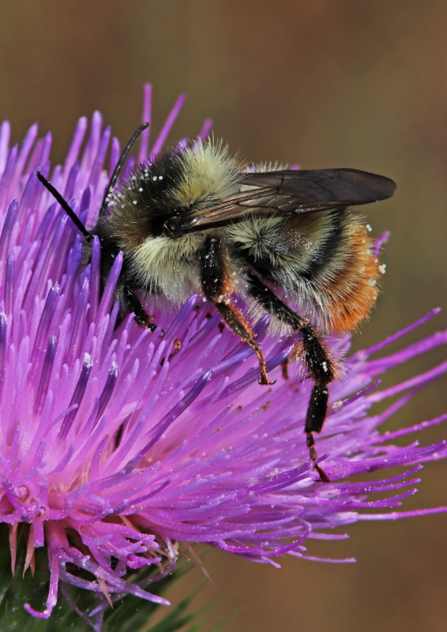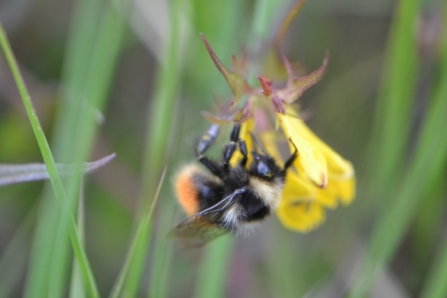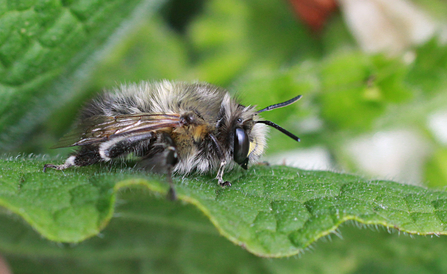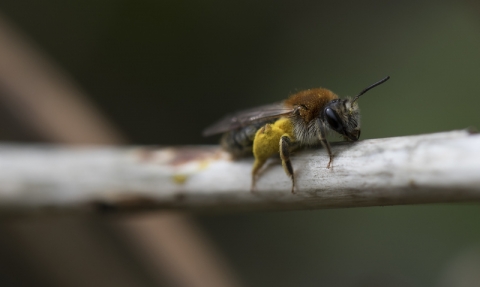Threats to bees and the decline in bee numbers (alongside many other insects and plants) have been widely reported, but despite the large number of wild bee species in Britain – around 270 – and Lancashire around 132 – much of the media focus has been upon honey bees. Honey bees are generally kept in hives and as such populations are artificially maintained; although they do escape and form feral colonies (some of which can survive for a number of years) they are not closely related to any of our wild species. Their closest relatives are some of the bumblebees, which also have a social structure and carry pollen on the hind leg in what is called a 'pollen basket'.
Which bees have we lost?
Although there are some threats common to both honey bees and their wild counterparts (including disease and the use of chemicals such as neonicotinoids) – the decline in some of our wild species has occurred over a much longer time period and has generally been caused by loss of habitat, which has in turn come about through large-scale changes in land use and land management. Though these changes largely took place around the period of the First and Second World Wars – when much of the land was ploughed, resulting in a huge loss of large areas of wildflower-rich meadows – the rapid decline in bee species, both locally and nationally, started much earlier (notably from the mid to late-1800s).
Due to our north-west location and oceanic climate (more rain and usually cooler summers) Lancashire has always had fewer species of bee (only half of the recorded UK species). Of the 25 bee species that have become extinct in Britain since records began, none ever occurred in Lancashire. These were possibly never common species and most would have been at the northern limit of their distribution in the south of England.







